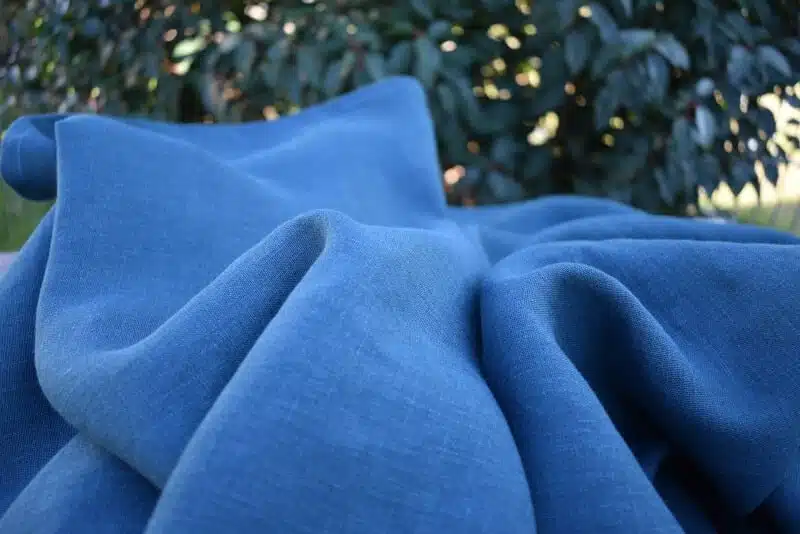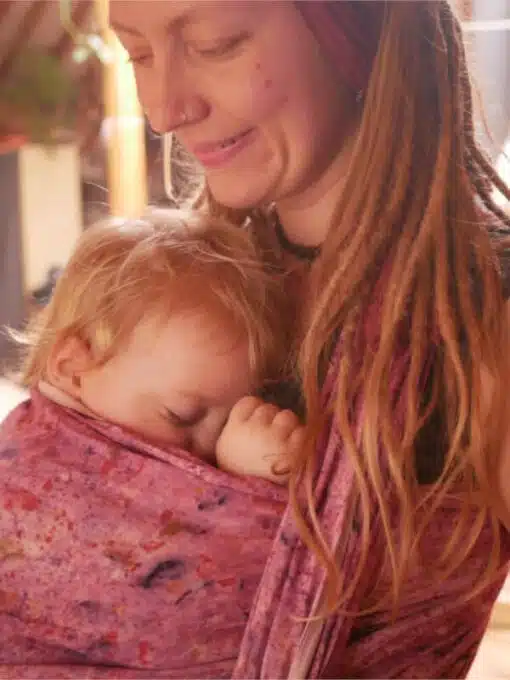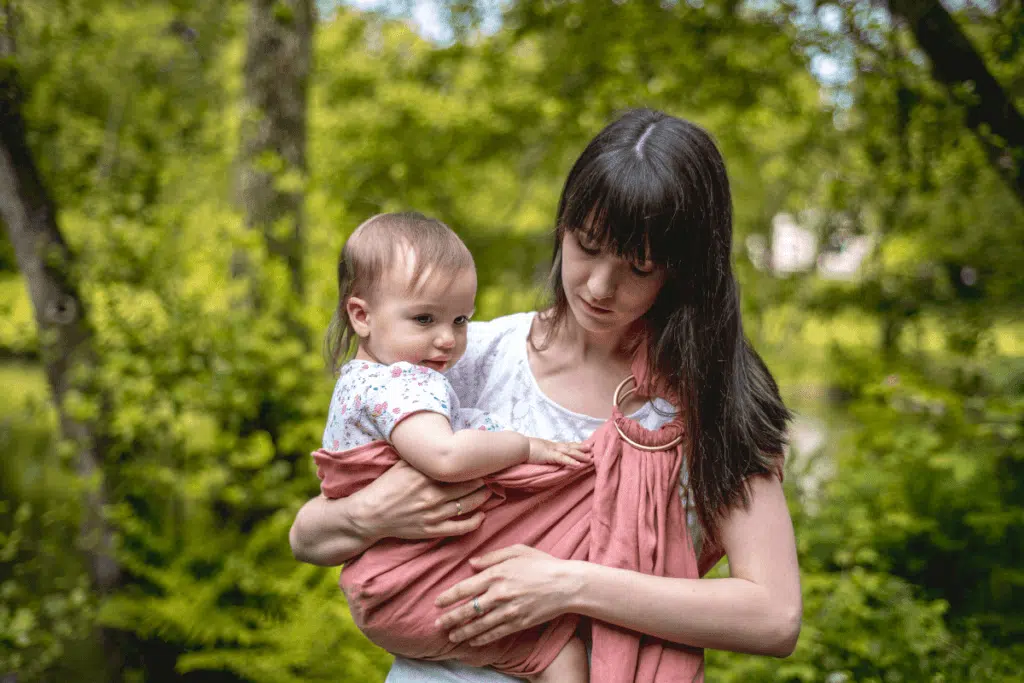Babywearing News
Why babywearing matters
Babywearing is a practice that has been practised in many cultures for centuries. It offers far more than just a practical way of transporting a child. Babywearing has profound effects on a child’s physical, emotional and social development and strengthens the bond between you and your child in a way that is natural and loving.
Table of contents
- What are the physical benefits of babywearing?
- What are the emotional and psychological benefits of babywearing?
- What are the practical and social benefits of babywearing?
- What are the historical and cultural aspects of babywearing?
- Summary
What are the physical benefits of babywearing?
The closeness that comes from carrying your baby plays an essential role in their physical development. Newborns naturally seek contact with their mother, as touch and closeness make them feel safe and secure. Studies have shown that babies who are carried cry less and sleep better¹. The steady rhythm of your heartbeat and your calm breathing have a calming effect² on your child and help them to relax.
Hemp Fabric
Babywearing also supports your baby’s physical development³ by developing their muscles and sense of balance. The constant small movements that your baby has to balance naturally strengthen their motor skills. In addition, babywearing helps to prevent deformation of the skull, which can occur when lying on the back for too long⁴.
What are the emotional and psychological benefits of babywearing?
The emotional bond⁵ between you and your child is intensified by babywearing. The constant contact and closeness strengthens your baby’s basic trust, as it feels that its needs are being recognised and fulfilled. This secure bond is the basis for healthy self-esteem and emotional stability in later life.
For you as a mother, babywearing can also be very beneficial. Being close to your child can help to alleviate postpartum depression⁶ and promote your emotional well-being. The feeling of being close to your child and being able to cope with everyday life at the same time gives you a sense of control and satisfaction.
What are the practical and social benefits of babywearing?
A major advantage of babywearing is the freedom of movement it offers. Unlike bulky pushchairs, babywearing allows you to move effortlessly through tight spaces or over rough terrain. Whether in the city, in the countryside or on public transport – babywearing makes your everyday life easier and more flexible.
From a social point of view, babywearing promotes closer involvement in social life. You can continue to socialise and take part in activities without having to give up being close to your child. This is particularly important in the first few months of life in order to avoid isolation and lead a balanced life.
What are the historical and cultural aspects of babywearing?
Babywearing has a long tradition in many cultures around the world. From the indigenous peoples of the Americas to African tribes, babywearing was and is a tried and tested method to support the child’s wellbeing and development. These traditional practices have paved the way for modern baby carriers and slings, which are valued and used by many families today.
Linen Fabric
Linen Fabric
Hemp Fabric
Summary
Babywearing is more than just a practical transport option. It promotes the physical, emotional and social development of your child in a loving and natural way and strengthens the bond between you and your child. Through the closeness and constant contact, you can better recognise your child’s needs and build a deep, secure bond. In our modern world, where mobility and social networking are important, babywearing offers a valuable link between traditional wisdom and modern lifestyles.
Sources
- ¹ Less crying and better sleep:
A study published in Pediatrics found that babies who are carried cry up to 43% less than babies who are not carried. This study shows that close physical contact leads to a significant reduction in crying in newborns (Hunziker & Barr, 1986). - ² Calming effect of heartbeat and breathing:
The calming effect of body contact on babies has been investigated in several studies. A study from Early Human Development found that the heart rate variability of babies who experience skin-to-skin contact is more stable and their stress responses are reduced (Ludington-Hoe et al., 2006). - ³ Promotion of motor development:
The motor benefits of babywearing have also been documented in various studies. A study in the journal Developmental Medicine & Child Neurology found that babywearing promotes babies’ sense of balance and motor skills (Blomqvist et al., 2011). - ⁴ Prevention of plagiocephaly:
The American Academy of Pediatrics (AAP) has emphasised that changing position through babywearing can help reduce the risk of plagiocephaly (deformation of the skull), which can result from lying on the back for too long (Laughlin et al., 2011). - ⁵ Strengthening emotional attachment:
A study in Child Development showed that close physical contact in the first months of life strengthens the emotional bond between mother and child and promotes the child’s basic trust in the long term (Ainsworth, 1979). - ⁶ Reduction of postpartum depression:
A study in the journal BMC Pregnancy and Childbirth found that skin-to-skin contact and babywearing were associated with a reduction in symptoms of postpartum depression in mothers (Bigelow & Power, 2012).































